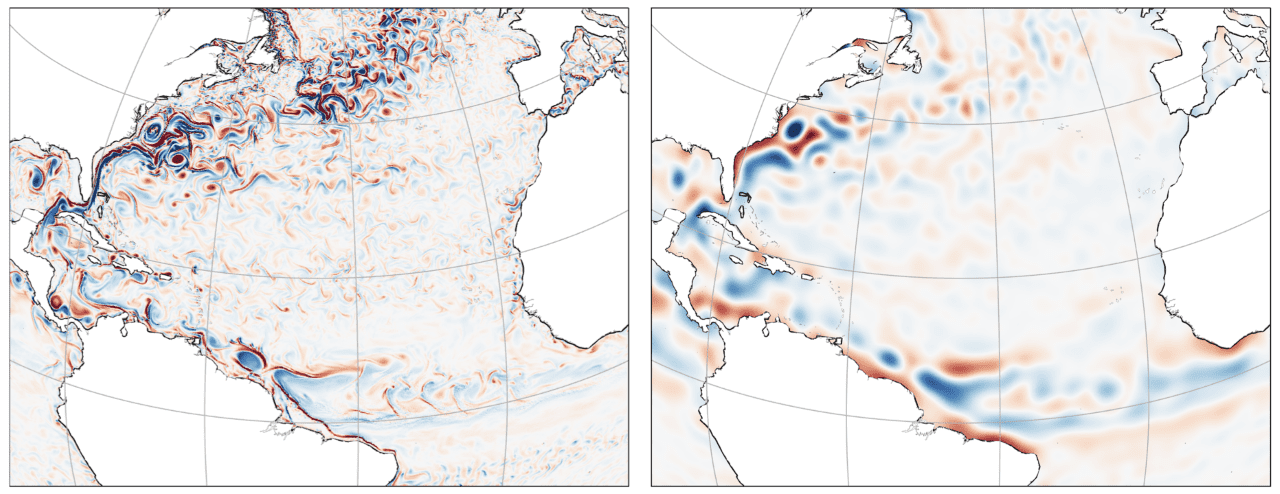Untangling Eddy Kinetic Energy in Our Oceans and Climate Models
By Randy Showstack

This figure shows how mesoscale features and eddy kinetic energy change with, or depend on, model grid scale and resolution. The figure provides a snapshot of surface relative vorticity, which is a measure of the spin of surface ocean currents. The left and right panels both show model output vorticity, with blue representing clockwise motion and red representing counterclockwise motion. The difference between the two panels is the effective resolution, with the right panel being a spatially filtered or smoothed version of the left panel. This figure was made using Modular Ocean Model 6 (MOM6) output and GCM-filters, a Python library developed to achieve Climate Process Team goals. Figure Credit: Nora Loose
The Ocean’s heat, freshwater, carbon, and nutrients are transported around the globe by ocean currents, including the meandering, swirling, and wiggly mesoscale eddy field. These eddying motions span from tens to hundreds of kilometers, contain a majority of ocean kinetic energy, and help to shape mean currents and their variability.
The mesoscale eddy field is a challenge for many climate models because models only resolve the largest eddies, requiring the effects of many eddies to be represented through parameterizations. To make ocean models more accurate and to understand how properties are transported within the ocean, scientists need a better understanding of eddies.
The Ocean Transport and Eddy Energy Climate Process Team (CPT), funded by the National Science Foundation and the National Oceanic and Atmospheric Administration, is working to develop, test, and improve model parameterizations of mesoscale eddies. The team hopes to get a proper accounting of the energetics associated with eddies, where the energy comes from and where the energy goes. “We know we can make that accounting better,” says Sylvia Cole, an associate scientist at WHOI and a member of the Eddy Energy CPT.
A sub-team based at WHOI is using observations—whether from satellites, moorings, Argo floats, or other platforms—to increase our scientific understanding of eddies and their energy pathways. One of the goals “is to present some observational analyses that enable climate modelers to use observations in a meaningful way to help validate their models,” says Jacob Steinberg, a postdoctoral investigator at WHOI, who also is an Eddy Energy CPT member. Jake has used satellite observations to construct a global eddy kinetic energy product that is customizable for comparison to models with different grid sizes, and to show the seasonal progression of eddy kinetic energy from small eddies to larger ones.
Improving models with better eddy information ultimately improves the decision-making that is happening based on model simulations of our current and future planet.
